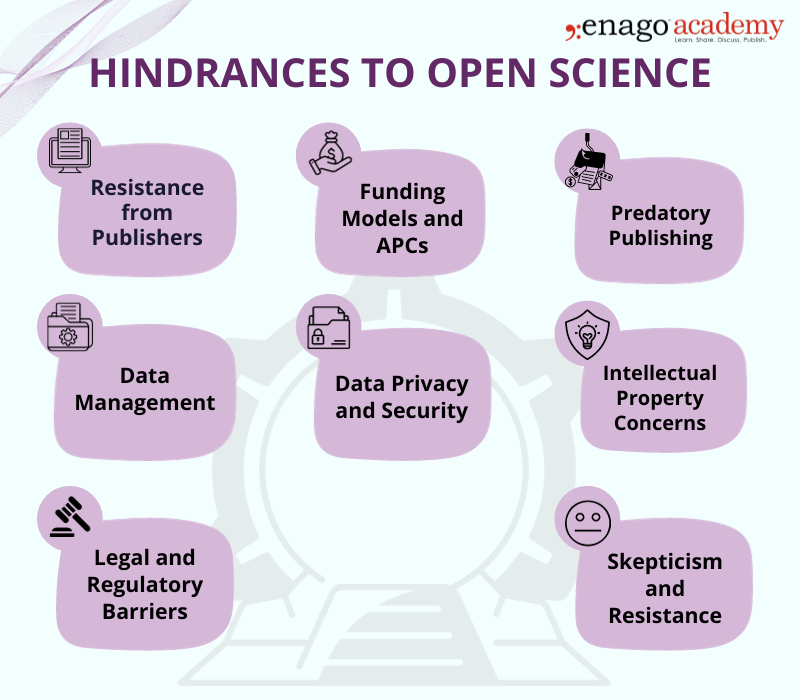The Year of Open Science: Charting the path to a sustainable future in research

The concept of open science has gained impetus in the recent years, heralding a new era in research and publishing. It represents a paradigm shift in research and knowledge generation, sharing, and dissemination.
What is Open Science
Open science is a movement that advocates transparency, collaboration, and accessibility in research. Also, it emphasizes on the breakdown of the traditional models of sharing scientific knowledge and data with the community. By embracing these principles, researchers can collectively work towards a more transparent and equitable future for scientific inquiry.
It is characterized by 4 elements namely; Open Access (OA), Open Data, Open Collaboration and Open Review. Open science encompasses a broader spectrum of openness extending to data sharing, software, protocols, and even the research process itself.
The Need for Open Science
There are several compelling reasons that drives the need for open science. The increased access of research can accelerate innovation and enable wider collaboration. Additionally, it facilitates transparent research practices, thereby enhancing reproducibility and public engagement. Furthermore, areas addressing complex global challenges like climate change and pandemic require collaborative and open approaches to finding solutions; which can be accelerated by open science.

Current Scenario of Open Science in the Publishing Industry
The publishing industry is transforming as open science gains prominence. Also, the European Commission has been a pioneer in adopting open science policies. However,develop its success depends on global cooperation, as science is an international endeavor.
Here’s an overview of the current developments in open science:

1. Accelerating Open Access Publishing
- OA publishing has accelerated as several traditional publishers now offer OA options, and new OA journals continue to emerge.
- This allows for greater accessibility to research articles without paywalls.
2. Sharing Manuscripts Using Preprints
- Researchers can share their manuscripts via preprints, which are facilitated via platforms like arXiv, bioRxiv, and medRxiv.
- They enable faster dissemination of research findings.
3. Encouraging Open Data and Materials
- Researchers are increasingly encouraging the open sharing of data and research materials.
- Also, many funding agencies and journals are mandating the availability of data alongside publications.
4. Promoting Open Peer Review
- Some journals have experimented with open peer review, where the reviews are made public; thus enhancing transparency and accountability in the review process.
5. Fostering Collaborative Research
- Open science has facilitated collaborative and crowdsourced research initiatives, especially in response to global challenges like the COVID-19 pandemic.
6. Improving Institutional and Funder Policies
- Many research institutions and funding agencies now require researchers to adhere to practices like publishing in OA journals and data sharing.
7. Building New Publishing Models
- Innovations in publishing models, such as diamond OA (no article processing charges) and ADCs, have emerged to address some financial and ethical issues in traditional publishing.
8. Promoting Advocacy and Education
- Advocacy and education about open science practices continue to be the essential components of the movement.
9. Rising Global Initiatives
- International organizations and collaborations have formed to promote open science on a global scale.
- For example, the United Nations Educational, Scientific, and Cultural Organization (UNESCO) has developed recommendations on open science.
10. Establishing Data Sharing Standards
- Efforts are ongoing to establish data sharing standards and best practices to ensure the quality, consistency, and interoperability of shared research data.
Furthermore, governments, funding agencies, and institutions are increasingly adopting policies to promote open science. These policies often require researchers to make their findings and data openly accessible.
Measures and Policies Promoting Open Science
There have been significant advancements in OA policies in 2023, including the increased funding for OA initiatives and the expansion of OA journals in various fields. The United States Office of Science and Technology Policy (OSTP) declared 2023 as the “Year of Open Science,” emphasizing its commitment in advancing open scientific practices. Additionally, the Group of Seven (G7) Science Ministers issued a joint call supporting open science, recognizing its relevance in addressing global challenges.
While many journals and publishers are adopting OA models, initiatives like Plan S accelerates this transition by mandating open access for publicly funded research. The cOAlition S launched Plan S in 2018 to ensure that research funded by public or private grants is published in OA journals or platforms without embargo. This transformative agreement has gained traction for encouraging journals to adopt OA models. Also, it sets out principles such as retaining author copyrights, ensuring quality in these journals, supporting new OA platforms, covering publication fees, promoting various business models, and not supporting a hybrid publication model. Moreover, it emphasizes transparency and compliance monitoring. However, some journals faced challenges complying with Plan S requirements and were removed from this initiative.
Furthermore, UNESCO’s Recommendation on Open Science, adopted in 2021, provides a comprehensive framework for open science policies and practices. It stands out by focusing on the engagement and open dialogue with other knowledge systems, emphasizing inclusivity, collaboration, and interaction between scientists, policy-makers, entrepreneurs, and the community.
Additionally, introduced in 2016, many consider the FAIR (findability, accessibility, interoperability, and reusability) Guiding Principles as fundamental for open scientific data. Furthermore, these principles stress the need for metadata to be easily findable, interoperable, and reusable for both humans and computers.
Various initiatives, including the Berlin Declaration in 2003 and principles from organizations like the OECD, have contributed to the development of open data policies. Also, it draws inspiration from earlier initiatives and advocates free availability of research publications and depositing these publications in appropriate online repositories.
These initiatives are part of a broader movement to make scientific knowledge freely accessible to the global community; promoting transparency and equitable access to research.
Hindrances to Open Science
Despite its promise, open science faces hurdles, including concerns about data privacy, intellectual property rights, and the sustainability of OA models. Also, some journals were excluded from Plan S due to difficulties in transitioning to OA.
Furthermore, some researchers face resistance due to concerns about data privacy, intellectual property, and funding limitations. Some hindrances are as follows:

Addressing these issues requires concerted efforts from researchers, institutions, funding agencies, and policymakers to create a supportive environment for open science while mitigating potential risks and challenges. Thus, developing clear policies, providing funding and incentives, and fostering a culture of openness and collaboration can help address these challenges and advance the adoption of open science practices.
The Future of Open Science
To bolster the future of publishing, it is crucial to support initiatives for open science. It can also revolutionize the way science conducts, communicates, and utilizes. As it continues to gain momentum, it will drive innovation, increase research impact, and ensure that knowledge remains a public good.
Organizing conferences dedicated to open science can raise awareness and foster collaboration among researchers and organizations. Recent conferences like the Open Science Conference and FORCE11 have played instrumental roles in promoting open science. Furthermore, platforms promoting OA and inclusive publishing can strengthen the open science movement.
Are you looking for a platform to share your articles or research summary which can be openly accessed by the community? Send your articles, research summaries or thought piece to Enago Academy’s Open Platform and join the open access movement!
Frequently Asked Questions
Some benefits of open science are increased access to knowledge, transparency, reproducibility, increased collaboration and public engagement.
Open science practices include open data, open access, open review, preprints, open educational resources, etc.
The six principles of open science are inclusion, equity, fairness, transparency, sharing and accessibility.









